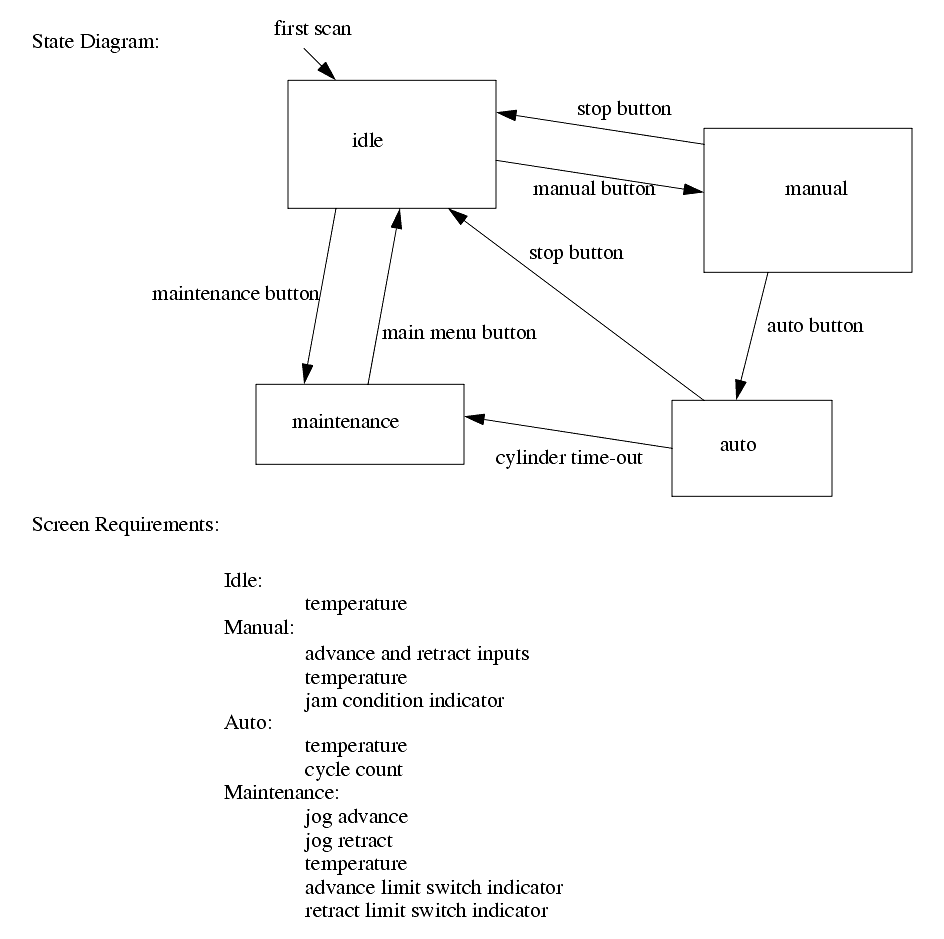
|
|
|
29.2 HMI/MMI DESIGN
������������There are a few basic approaches that will help when designing any Graphical User Interface (GUI), such as those running on HMIs. As normal the design process begins with gathering information, providing a structure, and then implementing the structure. A good set of introductory questions are given below.
After this information gathering stage the HMI Functionality can be designed using a state diagram and a list of input/output requirements for each screen. A simple example is given in Figure 438. Each of the four states in the diagram will become one of four HMI screens. The transitions between the screens are normally touchscreen buttons, but could also be values set by the PLC. For each of the screens a requirements list must be developed that shows the important information and actions available to the user.

HMI design also requires a limited amount of artistic skill to increase usability. A few simple rules-of-thumb a good HMI design are given.
A clear interface design can be presented to customers and non-technical people to get feedback before the implementation. These should include i) the State Diagram, ii) a list of Screen Requirements, and iii) a Look-and-Feel in general, and for each screen. Once these have been set the process of programming the HMI becomes a trivial matter.
Search for More: |

Custom Search
|

|